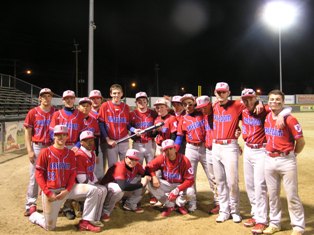Can you tell me more about getting rid of my ryegrass overseed? My fields will be used this spring but I have a break in play at the beginning of summer. What is good to use to get overseed out quick once play has stopped (May)? Why do we not use natural transition anymore?
North Carolina
It is still cold outside as I write this but it is a great time to be thinking about the health of your bermudagrass. Often when overseeded ryegrass looks so good in the spring, people cannot believe that we want to kill it to “make room” for the bermudagrass. Many turf users do not understand the complex relationship between the overseed grass and the base bermudagrass.
There was a time when overseeding consisted mostly of dumping huge quantities of annual ryegrass seed onto our bermudagrass fields. Back then overseed grasses were primarily coarse-textured, forage-based annual ryegrasses that had to be planted at high seeding rates so that competition for space would provide a finer texture turf. The combination of more immature plants and poor genetics (for turf use) resulted in a plant more susceptible to heat and disease. The result was often a quick dying stand of ryegrass. Then turf managers started using more resilient perennial ryegrasses for the better color and texture. Despite the name, perennial ryegrass was still managed as an annual.
With increased popularity of overseeding, plant breeders put great effort into developing darker, finer-textured grasses that were more heat and drought tolerant. It did not take long before perennial ryegrasses used for overseeding were not so susceptible to temperature and diseases and they began hanging around longer and longer into the summer, particularly in the transition zone. But for an overseed grass, we still want it to perform like an annual, not a perennial.
Traditional cultural practices used to facilitate transition include reduced mowing height, increased fertility, verticutting, and topdressing with sand. These can help put stress on the ryegrass that can help facilitate transition, but they still may not be enough. So, it is now more common to use selective herbicides as a transition aid.
When I was still a faculty member in Florida, the late Dr. A.J. Powell told me that in the northern reaches of the transition zone, there is no such thing as natural transition from overseeded perennial ryegrass to bermudagrass. He said that no amount of nitrogen fertilization, verticutting, scalping, etc., would ever kill the ryegrasses. Over the past 8 years in North Carolina, I have experienced the truth in his comments many times.
In the upper transition zone, ideal bermudagrass-growing weather only last for about three months (June, July, and August) and any competition greatly shortens that period. So to maintain a healthy stand of bermudagrass, we must either omit overseeding or chemically remove the ryegrass in spring or early summer.
Various herbicides and plant growth regulators (PGRs) have been tried through the years to try to hasten transition. Several chemicals are currently on the market for reducing perennial ryegrass with no adverse effect on bermudagrass color or overall turfgrass quality. The products currently include Certainty, Katana, Kerb, Manor/MSM, Monument, Revolver, and TranXit. All of these products except for Kerb belong to the sulfonylurea family of herbicides. Kerb is by far the slowest-acting product of the group and Manor/MSM the next slowest.
While the products for transition have gotten better over the past 10 years, they are still not foolproof. Depending on where you are located and timing of your events, most managers apply a product between mid-April (e.g., Florida) and mid-May (upper transition zone). Repeat applications may be necessary for complete control. The sulfonylureas are rate and temperature sensitive. So, higher-labeled rates and warmer temperatures (>65 degrees) will result in faster perennial ryegrass removal.
So even with selective herbicides, temperature is still a dominant factor facilitating transition, since it is responsible for the increased effects from the herbicides, natural decline of cool-season grasses, and the green-up of dormant warm-season grasses. One should never forget that for a smooth transition, we need the bermudagrass to green up before the ryegrass goes away.
This is important since once these products are applied, there is no undoing their damage to the cool-season grass. So, if your early spring turns out to be a late winter, then you can be left with thin bermudagrass (or worse, no bermudagrass) until it gets warm. Response from the sulfonylureas is usually seen within 14 to 21 days. It should also be noted that these products are not very effective at removing healthy annual ryegrass.
Naturally, there is an economic cost to using these products versus more natural methods. In the end, decision to use these products may depend on your location. In more southern areas, cultural practices typically result in a smooth transition. If you feel that the transition is taking too long, or you have too many “renegade” plants, you could apply a sulfonylurea product for late-season transition. If you are further north and have limited time to grow in your dormant bermudagrass, then one of these products can effectively reduce perennial ryegrass density with no adverse effect on bermudagrass.


